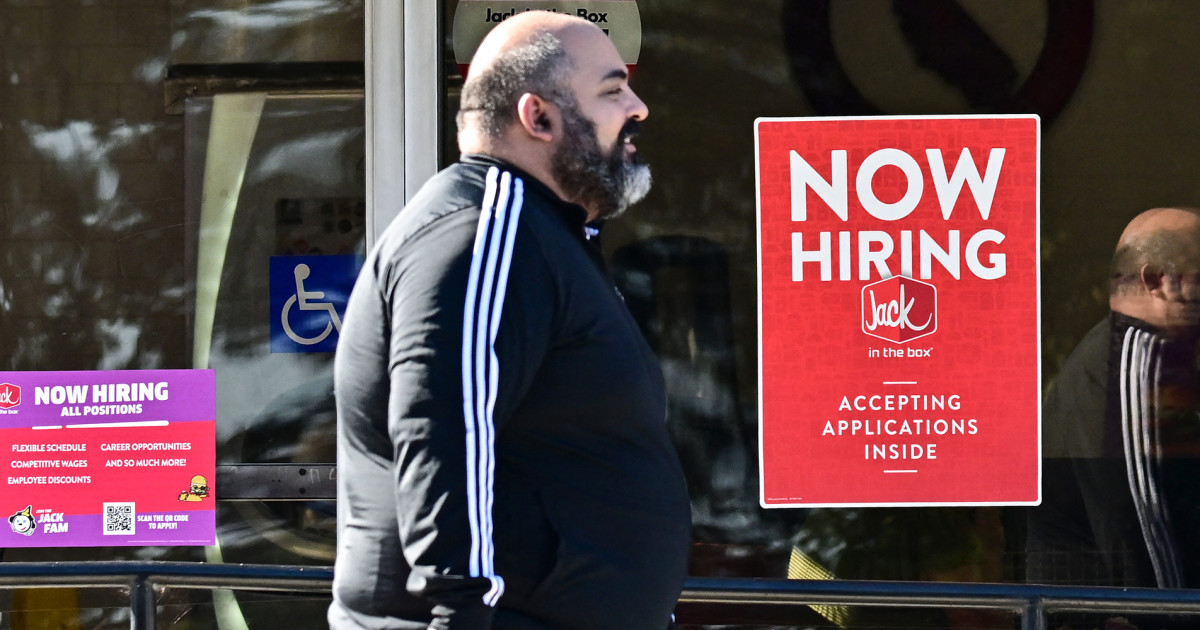Jobs
Jobs report in focus as election heats up, Fed heads for rate cut

The U.S. jobs market is losing steam. Today, Americans will learn just by how much.
The Bureau of Labor Statistics is set to report jobs data, including the unemployment rate, for August. As of July, the rate stood at 4.3%, up from 4.1% in June and the highest level since September 2017, excluding the Covid-19 pandemic spike — though still low by historical standards. Wall Street expects the report to show a gain of 161,000 jobs, with the unemployment rate slipping to 4.2%, according to Dow Jones.
The jobs report will come under even more intense scrutiny Friday, ahead of this month’s expected Federal Reserve interest rate cut and as economic issues dominate much of the presidential campaigns of Vice President Kamala Harris and former President Donald Trump. After Friday, there will be just two more monthly jobs reports before Election Day.
The economy is producing mixed signals. Earlier this week, two measures of manufacturing came in weak, fueling fears that the economy is slowing faster than hoped for.
On Wednesday, the BLS reported that job openings continued a sharply downward trend, though they still remain above pre-pandemic levels. But it showed that the hiring rate for professional and business services workers — who tend to enjoy higher salaries — has reached lows not seen since the Great Recession in 2009.
Yet layoffs remain largely subdued — even after jumping last month — as does the number of individuals filing for unemployment.
Businesses are “laying off workers like it’s a boom and hiring like it’s a recession,” Dario Perkins, managing director at TS Lombard financial firm, said in a post on X Wednesday.
The cross-currents come as Americans have mostly spent down their pandemic-era cash piles, while borrowing remain restrained by the high interest rate environment. And even as the rate of inflation has largely been tamed back to the Federal Reserve’s 2% target, consumers are still reeling from four years of surging prices.
Despite these headwinds, there’s been talk throughout the summer of the U.S. economy having achieved a “soft landing” of relatively low unemployment and relatively low inflation.
Stocks, too, remain near all-time highs despite some recent turbulence.
Mark Zandi, chief economist at Moody’s Analytics group, told NBC News that, as long as the unemployment rate remains at current levels, he believes a soft landing can be sustained.
But he said that sunny picture could easily be ruined.
“It wouldn’t take a whole lot to upset that story and see companies start pulling back and laying off,” Zandi said. “The labor market is good, but it feels like a fragile good.”
The current unemployment rate still implies more than 7 million Americans are out of work and looking for a job. Among them is Cassandra Kelly, a 38-year-old New Jersey resident and mother of two who told NBC News she has now been on the job market for more than a year.
An operations specialist with experience in communications and social media, Kelly said she’s been getting by thanks to a settlement payment from her landlord, financial support from her partner, and occasional independent contract work. But none of it has been enough to cover her expenses.
The full-time roles she’s seeing posted in her field now pay as little as $45,000 — hardly enough to qualify for an apartment in the New York City area, Kelly said, adding that some of the positions come with no benefits, something that she needs in order to support hers and her family’s medical needs.
“Even when I’m willing to go down to $45,000 or $50,000, the amount of work they’re asking for this tiny bit of money is not fair,” she said. “It breeds resentment. There have been times I’ve wanted to give up.”
There’s hope that the Federal Reserve’s widely expected interest-rate cut later this month will ease the brakes on growth and loosen financial conditions.
When it does so, the cost of borrowing on everything from autos to credit cards will decline. Mortgage rates, too, are likely to fall, although the Fed does not directly control those.
Whatever financial relief may come, the Fed’s policy actions won’t have an immediate effect — especially given that the current rate of 5.5% is already so high.
“It’s not a game-changing event,” Zandi said, meaning it will take time for the economy to adjust to a September rate cut and any future cuts that may come in November, December and beyond.










